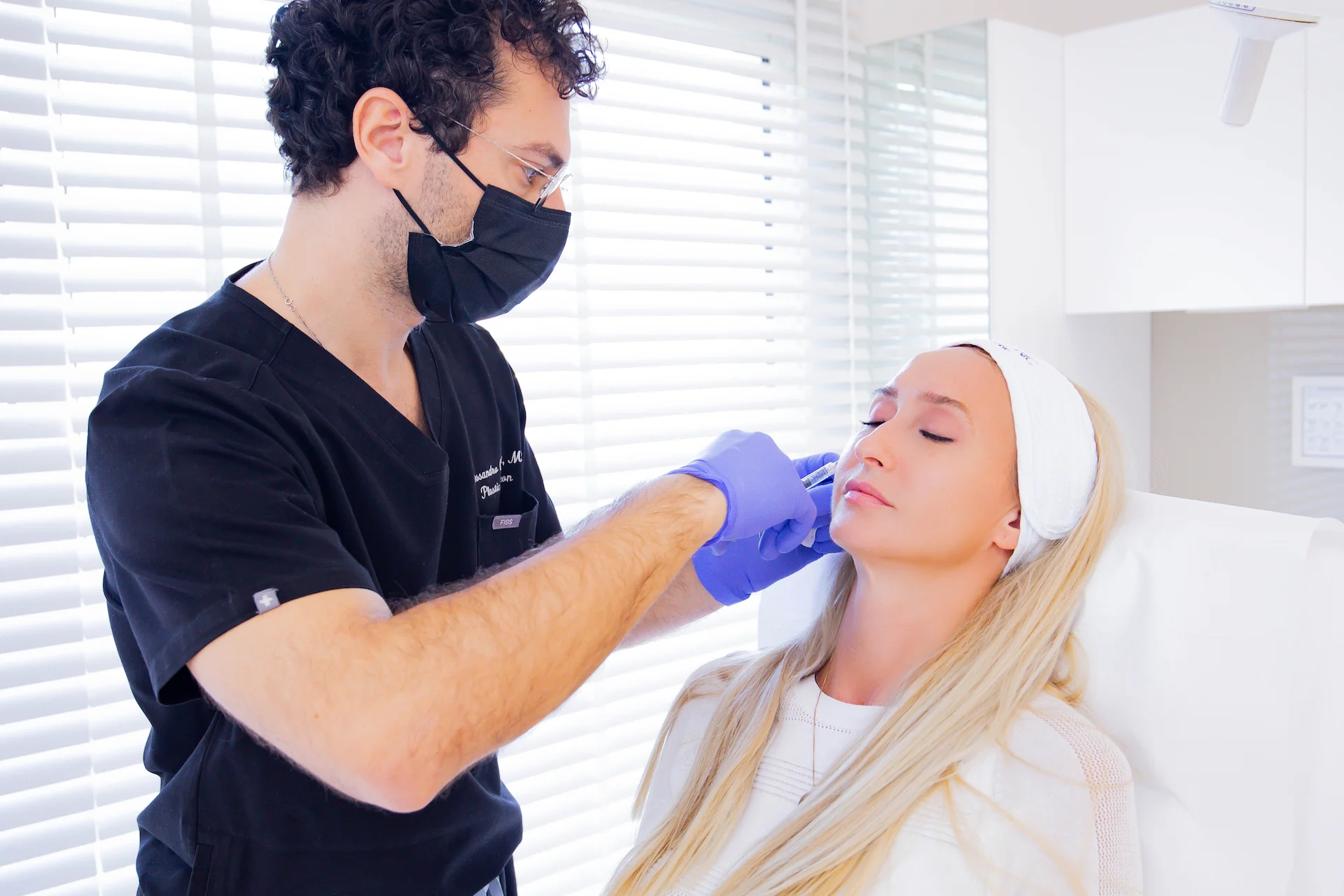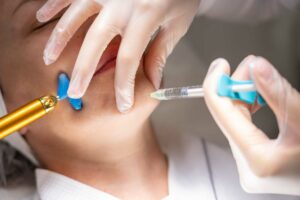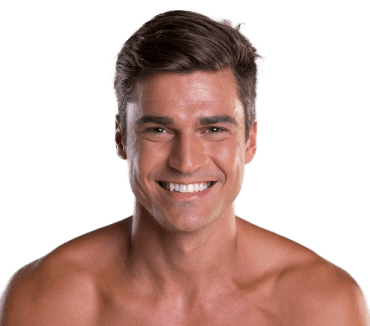Brachioplasty is a plastic surgery that can reshape the upper arm by removing extra tissue and skin. After the surgery, the upper arm appears smoother and firmer.
During the surgery, the surgeon removes excess fat tissue and skin between the elbow and the armpit. The skin that is left is returned over the newly created contours for a more defined arm look.
The surgery enables patients to achieve more proportionated and better toned upper arms. It can bring dramatic results and it doesn’t require a long recovery.
- Will I be awake or asleep during the surgery?
- Do I stay in hospital after surgery?
- What is the recovery time? When can I return to work/exercise?
- How long will the surgery last?
- How long until the final results of surgery are visible?
- Usually performed under general anesthesia
- Usually no
- Around 6 weeks
- Around 3 hours
- 6 weeks after the surgery
Most people decide to have this plastic surgery after they have lost a lot of weight. The skin that is left after the weight loss is stretched and might not have enough elasticity to bounce back into its place. Therefore the upper arms appear saggy and develop extra skin folds. This also happens if people lose weight from weight-loss surgeries.
That’s why people turn to this body-shaping surgery to return nice contours to their arms. Brachioplasty can be performed along with other plastic surgeries like removing excess skin and fat tissue from under the chin, abdomen or thighs.
Other reasons for having Brachioplasty include aging and genetic predisposition to developing saggy skin on the upper arms. While exercising can make the underlying muscles in the arms stronger, it can’t eliminate excess skin, tissue and fat deposits.
This surgery can help people feel good about their bodies after they have lost a lot of weight because it removes extra skin folds under their arms.
These excess skin folds can cause discomfort to people who have them because they can cause rash, inflammation or an infection. Once the skin folds are removed with arm lift surgery, people feel more self-confident.
With newly shaped upper arms, the patients feel more confident and develop a positive self-image. This is one of the major benefits of this surgery.
Other advantages include:
- Removal of excess skin and fat tissue. Once the skin that hangs below the upper arms is eliminated, this body area looks more attractive. It can dramatically improve the appearance of the entire body.
- Better contours of the upper arms. This surgery can restore the elasticity of the skin, that was lost because of fluctuation in weight or aging. After the surgery, arm contours are greatly improved.
- Scars are invisible. Even though the patient is left with scars, they are hidden in the inner arm, at the back of the arm or at the armpit. The scars are minimal and hardly noticeable.
- Improvement in the shape and tone of the upper arms. Brachioplasty can change the shape of upper arms and make them look better defined. Once flabby upper arms become firmer as the surgeon reshapes the underlying tissue and makes it more supportive.
- Improved proportions of the whole body. After arm lift surgery, the arms are better proportioned with the rest of the body.
- Better results from exercising. Some patients find it impossible to shape their upper arms just with weight lifting or arm exercises. After Brachioplasty, the patients notice that without excess tissue and skin they get stronger and easily do their arm workouts. This greatly increases the chances of keeping the results of the surgery for a long time.
Arm lift surgery can be life-changing. Anyone who is dissatisfied with saggy, excess skin on the upper arms can greatly benefit from this procedure. It is safe, it doesn’t require a long recovery and it achieves brilliant results.
Before scheduling this surgery, the patient is consulted with the plastic surgeon, who makes sure that the patient is the right candidate for it. If the patient has some health issues that might compromise the recovery period then the surgeon can suggest some other solutions.
It is not recommended to have this surgery until the patient has reached the ideal weight. If the patient fluctuates in weight a lot, he/she may develop saggy skin again and feel dissatisfied with the results of the surgery. If the patient gains a lot of weight after the surgery, he/she can damage the skin on the arms and develop wide scars or stretch marks. So, to maintain the results, achieved from Brachioplasty, it’s recommended to keep a steady weight.
The patient needs to do some preoperative testing which is a standard procedure. The results of the tests can help the surgeon to create the best treatment plan for the patient.
For two weeks before the surgery, the patient should stop taking blood-thinning medications like aspirin or ibuprofen because these medications can cause excessive bleeding during and post-surgery.
If the patient smokes, he/she should stop it for several weeks prior to the surgery. Stopping smoking can speed up recovery.
All other recommendations on how to prepare for Brachioplasty are given by the surgeon.
The surgery is usually performed under general anesthesia unless the surgeon and anesthesiologist decide otherwise. Then it can be done with local anesthesia and sedation.
After anesthesia, the surgeon marks the arm where he plans to make incisions. The incisions can be made on the inside or back of the arms, on the armpits or from the top of the elbow to the armpit.
Once the surgeon has made the incision, he tightens or reshapes the tissue in the upper arm and removes the excess folds of skin. The arm gets a smoother contour and improved muscle definition. He pulls the skin back over the tissue and closes the incisions with stitches and places dressing over the stitches and sometimes even drains to prevent the fluid from building up under the incisions.
If the patient has excess fat pockets in the upper arm area, the surgeon can use liposuction to remove the fat.
The whole surgery lasts for about 3 hours.
The patient can go home soon after the surgery unless advised otherwise. In any case, the patient should arrange for someone to drive him/her home and stay with him/her for at least 24 hours.
As with any other surgery, Brachioplasty carries a risk of developing side effects. The usual side effects include discomfort, swelling, bruising and redness. These sensitivities are only temporary and resolve after 3 or 4 days.
In case of more serious side effects, the patient should inform the surgeon immediately.
The patient will be given instructions on how to behave after the surgery in order to speed up the recovery.
Usually, the patient can return to work after a week, but he/she should limit the activities that involve arms for 1 to 2 weeks and avoid strenuous exercise for 6 weeks. Too much activity that involves arms can stretch up the stitches and compromise the final results. It is also important not to put pressure on the stitches during the healing period. The surgeon will inform the patient when the stitches are ready to be removed. In some cases, the stitches can dissolve on their own.
The patient should wear loose clothes that open in the front to avoid lifting arms above the head.
The patient should wear a proper compression garment for 3 to 6 weeks to get better outcomes from the surgery.
After approximately 6 weeks, the patient can return to all normal daily activities.
The patient will be left with scars because they are common after every surgery. However, the incisions are placed in strategic places and the scars won’t be noticeable. Depending on the extent of the surgery, some patients need shorter and others longer incisions. The surgeon should suture the incisions with great care because then the scars won’t be as dramatic.
After the surgery, the surgeon explains to the patient how to properly treat his/her stitches and then scars in order to make them as invisible as possible. One of the recommendations includes limiting the scars to sun exposure because the scars can get darker.
If treated properly, most scars will fade away eventually.
Some of the initial results of this surgery are seen right after the surgery. However, the final results will be apparent once the swelling has resolved. After approximately 6 weeks post-surgery, the patient can see the full results.
The best part is that the results of Brachioplasty are permanent. Once the excess tissue and skin are removed, the patient’s upper arms will stay nicely contoured for a lot of years. To keep the results, the patient should try to keep a stable weight, exercise and have a proper diet. Exercise can help to keep the arm muscles nicely toned and strong and a proper diet will prevent the development of fat deposits.
To achieve the best possible outcomes from Brachioplasty, it is important to follow all the instructions given by the surgeon.







